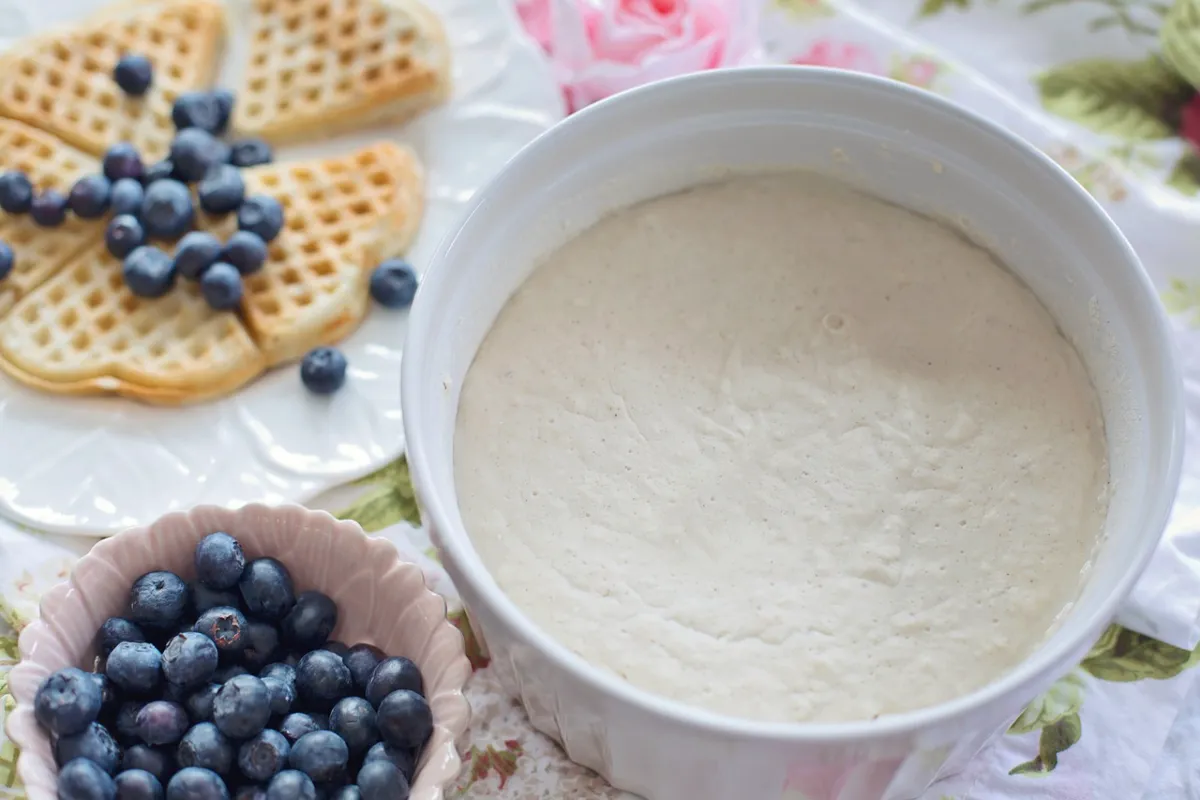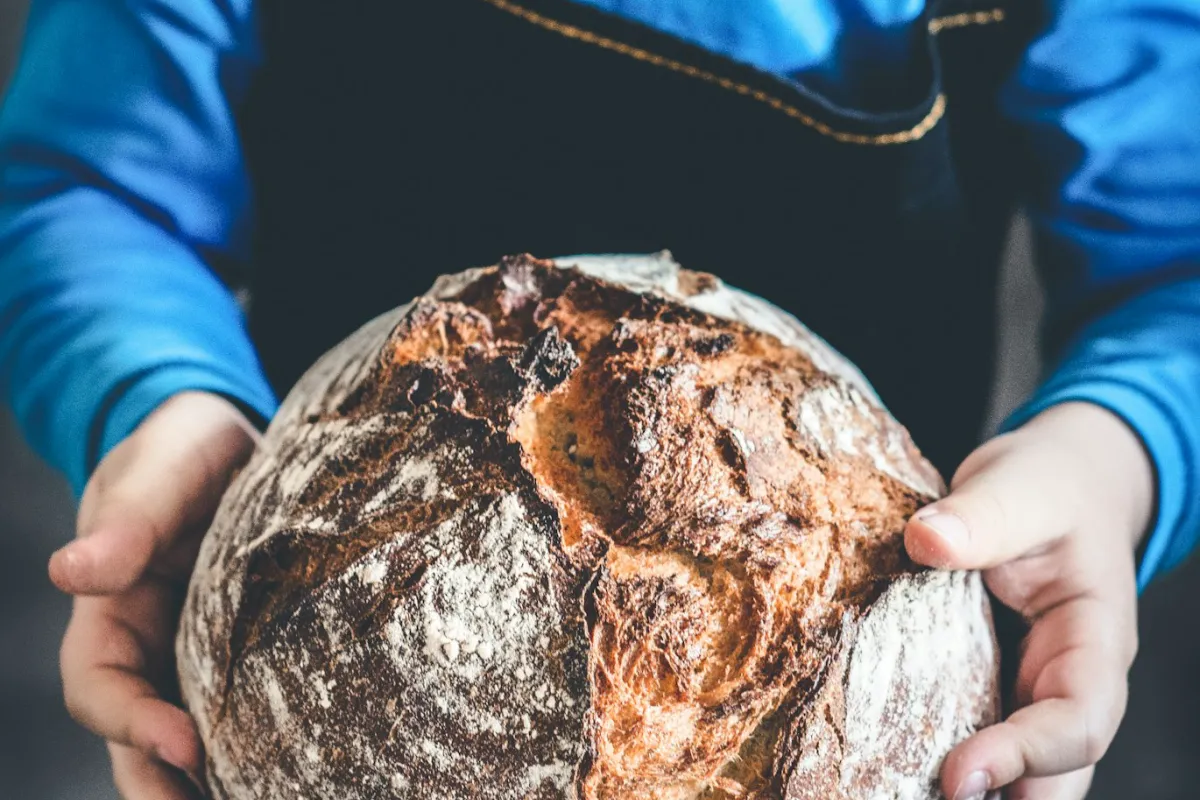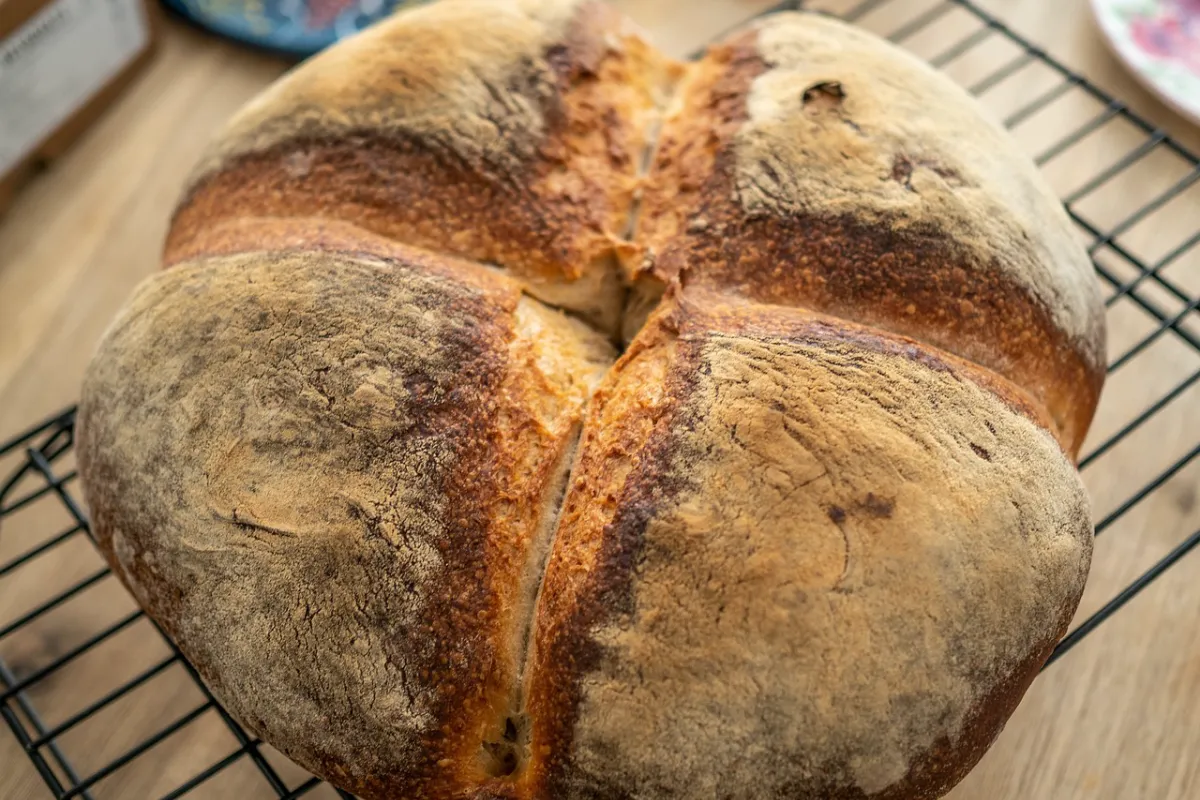When you embark on the journey of sourdough baking, you step into a fascinating world of fermentation, flavor, and creativity. Two key terms that every sourdough enthusiast will encounter are sourdough starter and sourdough discard. Understanding the difference between sourdough starter and discard is crucial for mastering the craft of sourdough. Thus, this comprehensive guide will delve into the distinctions, uses, and best practices for managing both sourdough starter and discard, ensuring that you maximize your baking potential while minimizing waste.
What is Sourdough Starter?
A sourdough starter consists of live cultures of wild yeast and lactic acid bacteria, which act as natural leavening agents. Unlike commercial yeast, which consists of a single strain, sourdough starter contains a complex ecosystem of multiple strains of yeast and bacteria. Consequently, this diversity gives sourdough bread its distinctive tangy flavor and chewy texture. The difference between sourdough starter and discard becomes evident when you consider their roles in baking.
How to Create a Sourdough Starter
Creating a sourdough starter from scratch rewards you with flavorful bread, but it requires patience and attention to detail. Here’s a step-by-step guide:
- Day 1: Begin the Fermentation Process
- First, mix equal parts of flour and water in a non-reactive container. A common ratio is 50 grams of flour and 50 grams of water. After mixing, stir until there are no dry spots, cover loosely, and leave at room temperature.
- Day 2: Feed Your Starter
- By the second day, you might notice some bubbles on the surface. These bubbles indicate that fermentation has begun. Therefore, discard half of the mixture and feed the starter with equal parts of flour and water again. Stir well, cover loosely, and allow it to continue fermenting.
- Day 3-7: Continue Feeding
- Over the next few days, continue the cycle of discarding half the starter and feeding it with fresh flour and water. As a result, the starter becomes more bubbly and develops a tangy aroma.
- Day 7 and Beyond: Ready to Use
- After about a week, your starter should be active enough for baking. Indeed, it should double in size a few hours after feeding and emit a pleasant, slightly sour smell.
Maintaining Your Sourdough Starter
Once your starter is established, maintaining it becomes a routine part of your baking life. Regularly feeding it keeps the yeast and bacteria healthy and active, which is essential for producing consistent results in your baked goods. Understanding the difference between sourdough starter and discard helps you maintain your starter more effectively.
- Feeding Schedule: If you bake frequently, keep your starter at room temperature and feed it daily. However, if you bake less often, store it in the refrigerator and feed it once a week.
- Feeding Process: Each time you feed your starter, discard a portion (usually half) and add equal parts of fresh flour and water. Stir well and allow it to rest at room temperature until bubbly before storing.
- Storing Your Starter: For long-term storage, refrigerate your starter. When you’re ready to bake, simply take it out, let it warm up, and resume regular feedings to reactivate it.
Maintaining a sourdough starter is like caring for a small pet. It needs regular attention, but the rewards—freshly baked sourdough bread with a complex, rich flavor—are well worth the effort.
For those looking to incorporate their sourdough starter into different baked goods, try experimenting with recipes like pumpkin banana loaf. The combination of pumpkin, banana, and the subtle tang of sourdough creates a delightful treat that’s perfect for any occasion.
What is Sourdough Discard?

As you feed your sourdough starter, you’ll inevitably generate sourdough discard. This is the portion of the starter that you remove before feeding. Although it might seem like waste, discard serves as a valuable ingredient in various recipes. Understanding the difference between sourdough starter and discard allows you to utilize both effectively in your baking. Unlike the active starter, discard is less bubbly and potent, but it still contains the same wild yeast and bacteria, albeit in a less active state.
Why Do You Need to Discard?
Discarding a portion of your starter before feeding is essential for maintaining a healthy balance of microorganisms. Without discarding, your starter would grow exponentially, requiring more and more flour to feed it. Not only would this be wasteful, but it could also overwhelm the yeast and bacteria, leading to a sluggish and less effective starter.
Activity and Flavor Differences
- Fermentation Power: Discard has less leavening power compared to an active starter. This makes it less suitable for recipes that require a significant rise, such as bread. However, it works perfectly for recipes where the rise isn’t as crucial, like pancakes or flatbreads. This is a key difference between sourdough starter and discard that bakers must understand.
- Flavor: Discard imparts a more subtle tangy flavor compared to an active starter. Therefore, it is ideal for recipes where you want the sourdough flavor to be present but not overpowering.
To learn more about creative ways to use sourdough discard, check out these sourdough discard recipes. These recipes help you turn what might seem like waste into delicious, tangy treats.
Key Differences Between Sourdough Starter and Discard
Understanding the difference between sourdough starter and discard is crucial for making the most of your baking endeavors. Here’s a closer look at how they differ:
1. Usage in Baking
- Sourdough Starter: The active starter works best for recipes that require fermentation and rising, such as bread, bagels, and some types of pancakes. The yeast and bacteria in the starter work together to leaven the dough, resulting in the airy structure and tangy flavor that sourdough bread is known for.
- Sourdough Discard: On the other hand, discard suits recipes that don’t rely on fermentation for their rise. It can be used in a variety of baked goods where the leavening action comes from baking soda or baking powder instead of yeast. Examples include crackers, waffles, quick breads, and cookies.
2. Fermentation and Leavening Power
- Sourdough Starter: The active starter serves as a powerhouse of fermentation. The wild yeast in the starter ferments the sugars in the flour, producing carbon dioxide gas that makes the dough rise. This process is what gives sourdough bread its characteristic texture and flavor.
- Sourdough Discard: Discard provides much less leavening power because it contains fewer active yeast cells. While it can still contribute flavor and some texture, it won’t cause dough to rise as an active starter would. This makes it less suitable for bread but perfect for recipes like flatbreads, pizza dough, and some types of biscuits.
3. Flavor Profiles
- Sourdough Starter: The flavor of an active starter remains bold and tangy, reflecting the robust fermentation process. This flavor is transferred to the bread or other baked goods, giving them the distinctive sourdough taste.
- Sourdough Discard: Conversely, the flavor of discard tastes milder and less complex than that of an active starter. While it still has some tang, it’s much more subdued, making it versatile for use in a wider range of recipes.
4. Storage and Longevity
Understanding the difference between sourdough starter and discard also extends to how you store and manage them.
- Sourdough Starter: An active starter requires regular feeding to stay healthy. When kept at room temperature, it should be fed daily. If refrigerated, it can be fed weekly. Properly maintained, a sourdough starter can live indefinitely, becoming a cherished part of your baking tradition.
- Sourdough Discard: Discard keeps well in the refrigerator for up to a week, or you can freeze it for longer periods. Some bakers also dehydrate their discard for long-term storage, rehydrating it when they’re ready to use it. This flexibility makes it easier to manage discard without wasting it.
If you’re interested in using discard in various creative ways, consider incorporating it into recipes like earl grey cookies. The subtle sourdough flavor pairs beautifully with the delicate taste of earl grey tea, creating a unique and delicious treat that’s sure to impress.
How to Use Sourdough Discard
Just because discard doesn’t have the same fermentation power as an active starter doesn’t mean it’s useless. In fact, discard serves as a versatile ingredient in the kitchen, adding a mild tangy flavor to a variety of dishes. Understanding the difference between sourdough starter and discard helps you find the best uses for both. Here are some of the best ways to make use of sourdough discard:
1. Baking with Discard
- Pancakes and Waffles: Sourdough discard works perfectly for making light and fluffy pancakes and waffles. The mild tang of the discard complements the sweetness of syrup or honey, making breakfast a delightful experience.
- Quick Breads: Use discard in quick bread recipes, such as banana bread or zucchini bread, where it adds depth of flavor without needing to contribute to the rise.
- Biscuits and Scones: Incorporate discard into your biscuit or scone dough for a subtle sourdough flavor. The discard adds a complexity that pairs wonderfully with butter and jam.
2. Savory Applications
Understanding the difference between sourdough starter and discard allows you to apply discard creatively in savory dishes as well.
- Crackers: Sourdough discard works well in making delicious, crispy crackers. The tangy flavor pairs well with cheese, dips, or as a stand-alone snack.
- Pizza Dough: Use discard in pizza dough for a thin, crispy crust with a hint of sourdough flavor. This is a great way to elevate your homemade pizza without the long fermentation process of a traditional starter.
- Flatbreads and Tortillas: Discard works effectively in making quick flatbreads or tortillas, adding a slight tang to these simple breads.
3. Other Creative Uses
- Cookies and Brownies: Add a bit of discard to your cookie or brownie batter for a subtle complexity in flavor. The tanginess of the discard can balance the sweetness of these treats.
- Thickener for Soups and Sauces: Sourdough discard can thicken soups and sauces. Its mild flavor won’t overpower the dish, but it will add a nice background note of sourdough.
- Batter for Frying: Use discard in the batter for frying fish, vegetables, or chicken. The tangy flavor of the discard complements the crispy, fried coating.
4. Preserving Sourdough Discard
- Freezing: Discard can be frozen for later use. Simply portion it into small containers or freezer bags and thaw when you’re ready to use it. This allows you to save up discard over time and use it in larger batches.
- Dehydrating: Dehydrated sourdough discard is shelf-stable and can be rehydrated when needed. Spread the discard thinly on a baking sheet and dry it in a low-temperature oven or food dehydrator. Once dried, break it into pieces and store it in an airtight container.
By finding creative ways to use sourdough discard, you not only reduce waste but also expand your baking repertoire. The possibilities are nearly endless, making discard a valuable part of your sourdough journey.
Common Myths and Misconceptions

Several myths and misconceptions about sourdough discard need to be addressed. These misunderstandings can lead to wasted discard or missed opportunities to enhance your baking. Understanding the difference between sourdough starter and discard can help dispel these myths:
Myth 1: Discard is Useless and Should be Thrown Away
Reality: Discard offers value beyond what many assume. As we’ve explored, it can be used in a wide variety of recipes, both sweet and savory. From pancakes to crackers, discard adds flavor and texture that can elevate your baking.
Myth 2: Discard is as Strong as a Starter in Leavening
Reality: While discard can contribute to the texture of baked goods, it doesn’t have the same leavening power as an active starter. This means that it’s not suitable for bread or other recipes that require significant rise. However, its mild leavening ability works perfectly for recipes like flatbreads, pancakes, and biscuits.
Misconception: You Can Use Discard Interchangeably with Starter in Any Recipe
Reality: Starter and discard serve different purposes in baking. While they both come from the same source, their roles are distinct. Starter is used for its strong fermentation power, while discard offers flavor and versatility in non-rising recipes.
Understanding these distinctions allows you to make informed decisions in the kitchen and to use both starter and discard effectively.
Tips for Managing Sourdough Discard
To make the most of your sourdough discard, manage it wisely. Here are some tips to help you reduce waste and maximize the potential of your discard:
1. Minimize Waste
- Adjust Feeding Ratios: If you’re not using your discard as quickly as it’s produced, reduce the amount of flour and water you use in feedings. This will decrease the amount of discard generated.
- Plan Ahead: Incorporate discard recipes into your weekly meal planning. This ensures that you’re using up discard as it’s produced, rather than letting it accumulate.
2. Storage
- Refrigeration: Keep discard in a sealed container in the fridge, where it can last for several weeks. This allows you to accumulate discard over time and use it when needed.
- Freezing: If you produce more discard than you can use in a week, freeze it. Portion it into small containers or freezer bags, and thaw as needed for recipes.
3. Time Management
- Baking Schedule: Align your baking schedule with your discard production. For example, if you feed your starter on a Sunday, plan to use the discard in a recipe on Monday or Tuesday.
- Batch Cooking: Use discard in batch cooking recipes, such as pancakes or waffles, that can be frozen and reheated throughout the week. This not only saves time but also ensures that your discard doesn’t go to waste.
By following these tips, you can efficiently manage your sourdough discard, reducing waste and making the most of this versatile ingredient.
Frequently Asked Questions (FAQs)
1. What is the Best Way to Store Sourdough Discard?
Store discard in an airtight container in the refrigerator. It can also be frozen or dehydrated for long-term storage. This flexibility allows you to use discard when it’s convenient, without worrying about it going bad.
2. Can Sourdough Discard be Used as a Starter?
No, discard doesn’t have the fermentation power required to leaven bread effectively. While it can be used in recipes that don’t require a rise, it’s not a substitute for an active starter.
3. How Often Should I Feed My Sourdough Starter?
Feed your starter daily if kept at room temperature, or weekly if stored in the refrigerator. Regular feedings keep the starter active and ready for baking.
4. What Can I Do if My Sourdough Discard Smells Bad?
If discard develops an unpleasant odor, it may have spoiled. It’s best to discard it and start fresh. A healthy discard should have a mild, tangy aroma.
5. Is it Necessary to Discard Every Time I Feed My Starter?
Yes, discarding a portion of the starter before feeding helps maintain the balance of microorganisms and prevents overgrowth. This process keeps your starter healthy and active.
Conclusion
Understanding the difference between sourdough starter and discard is essential for anyone interested in sourdough baking. By mastering these concepts, you can make informed decisions in the kitchen, reduce waste, and expand your baking repertoire. Whether you’re crafting a loaf of bread with your starter or whipping up some quick pancakes with discard, knowing how to manage both will help you get the most out of your sourdough journey.
For more inspiration on how to use sourdough starter and discard, explore recipes like earl grey cookies and pumpkin banana loaf. These recipes showcase the versatility of sourdough and offer delicious ways to incorporate it into your baking.

